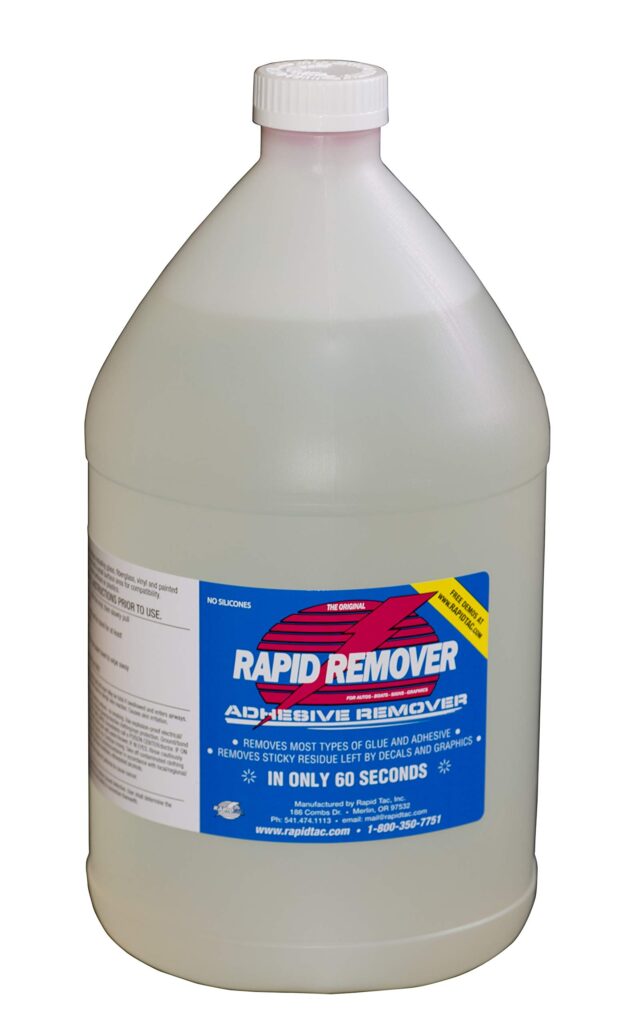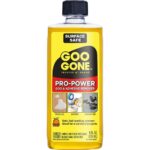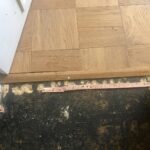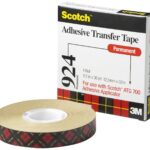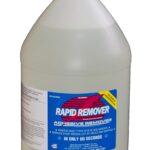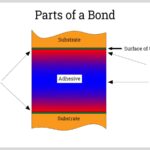Adhesive remover is a type of substance that is used to remove adhesive materials from surfaces. It is designed to be used on a variety of surfaces, including plastic, metal, and glass. It is generally used to remove sticky residue left behind by tape, stickers, labels, and other adhesives. Adhesive remover is available in a variety of forms, ranging from sprays, solvents, and gel removers. Each type of remover has its own unique set of benefits, such as the ability to penetrate deep into the adhesive or to quickly dissolve it.
Depending on the type of adhesive, some removers may require additional scrubbing or buffing to completely remove the residue. Adhesive remover is a safe and effective option for removing various types of adhesives from surfaces. It is important to use only the type of remover that is specifically designed for the type of material being worked with. It is also important to read the instructions carefully, as some removers may be flammable or have strong odors. When using any type of adhesive remover, it is important to take the necessary safety precautions. Always wear gloves when using any type of remover, as it can be caustic and cause skin irritation. Additionally, make sure to use the remover in a well-ventilated area and keep it away from any sources of flame or high heat. Overall, adhesive remover is a great way to quickly and safely remove adhesives from surfaces. It is important to read the instructions carefully, use the appropriate safety precautions, and to use the right type of remover for the material being worked with.
What is a good adhesive remover
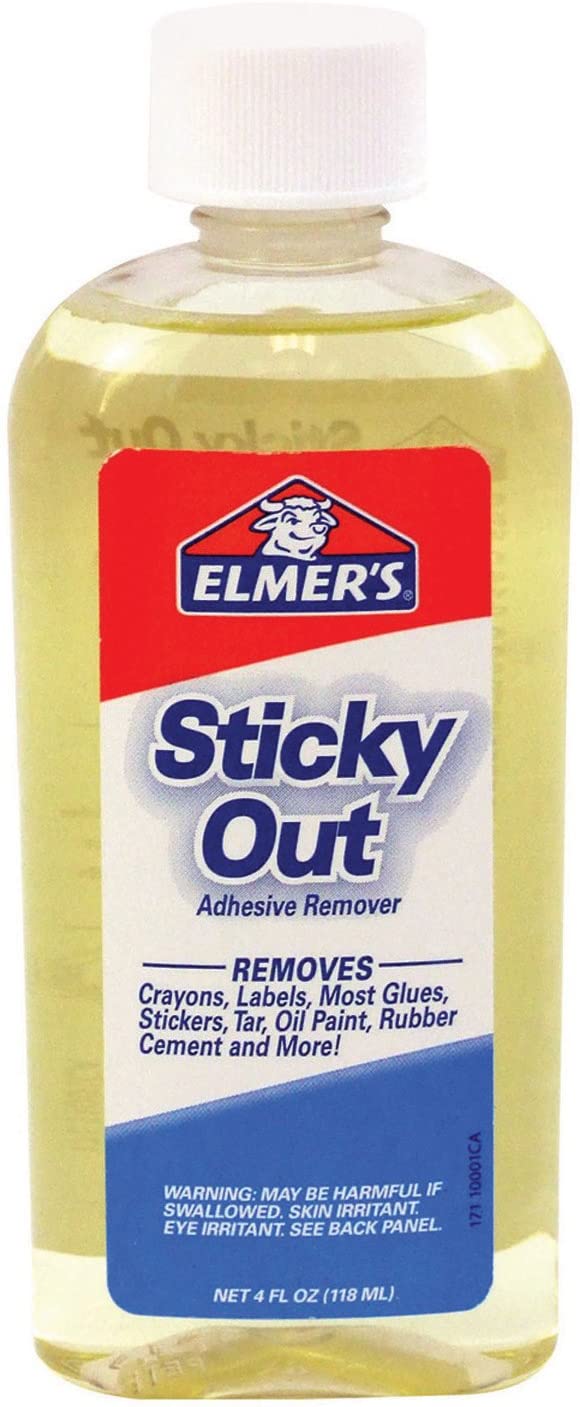
Adhesive remover is a great tool to have in your arsenal when tackling a variety of household projects. It can be used to remove glued-on wall decals, paint, wallpaper, or even stubborn stickers. With the right products and techniques, adhesive remover can make any job easier and quicker. A good adhesive remover should be specifically designed to be safe to use on all surfaces. It should be non-flammable, non-corrosive, and should not leave a residue.
Additionally, it should be able to be used on a variety of materials, such as plastic, metal, wood, and glass. When choosing an adhesive remover, it is important to select one that is suited for the specific job you have in mind. If you are needing to remove paint from a wall, for example, you should ensure you are selecting a product that is designed for that purpose. Adhesive remover can be a great tool for all sorts of home improvement projects, from removing stubborn labels to restoring old furniture. With the right product, the job can be done quickly and safely.
What is the best super glue remover?
The best super glue removers are usually chemical-based and designed to break down, dissolve, or otherwise remove super glue. They usually come in the form of a gel, liquid, aerosol, or foam and contain ingredients such as acetone, ethyl acetate, and/or isopropyl alcohol. These chemical removers are designed to be effective and safe to use on a variety of surfaces. Some products are specifically designed to work on hard surfaces like plastic, metal, and glass, while others are designed to work best on softer surfaces like fabric, paper, and wood. Additionally, some super glue removers come in a spray form, which makes them easy to apply and helps minimize any mess.
This is especially helpful for getting rid of tough spots, as the spray can be directed directly at the area. It is important to make sure that you read the instructions carefully, as some chemical-based removers can damage certain surfaces and can be hazardous if inhaled, so it is best to use them in a well-ventilated area. With the right super glue remover, you should have no trouble removing even the toughest glue spots quickly and safely.
What are some of the strongest brands of adhesive tape?
Some of the strongest brands of adhesive tape include 3M, Gorilla, and Duck. Adhesive remover is a substance used to dissolve adhesive residue. It is often used when traditional methods of removal are not working. There are many varieties of adhesive removers available, so you’ll need to choose one that is compatible with the adhesive tape you are using. Using adhesive remover is not always necessary, as some brands of adhesive tape can be removed with plain water.
However, if you are using strong brands of adhesive tape like 3M, Gorilla, or Duck, then adhesive remover may be necessary. The key to choosing the right adhesive remover is to make sure that it is compatible with the type of adhesive tape that you are using. Make sure to read the instructions carefully to ensure that you are using the right type of adhesive remover. With the right adhesive remover, you can easily remove any adhesive tape without damaging the surface.
What is the best silicone adhesive?
When it comes to the best silicone adhesive, there are a variety of choices available. It is important to consider the size and shape of surfaces that the silicone adhesive will be used in. Also, the type of adhesive should be taken into consideration. There are strong adhesives that can provide a permanent bond and milder adhesives that are easy to remove. When selecting the best silicone adhesive for a project, look for one that provides a strong bond and is resistant to water, chemicals, temperatures and wear.
Additionally, it should be flexible and have good adhesion and shear strength. The best silicone adhesive should be non-toxic and safe for use around children and pets. It should also be easy to apply and have a long-lasting bond. It should also be easy to remove with the help of adhesive remover. In conclusion, when choosing the best silicone adhesive for a project, it is important to consider the size and shape of the surface, the type of adhesive and its properties, such as adhesion strength and flexibility. Additionally, it should be non-toxic and easy to apply and remove with adhesive remover.
What is the best denture adhesive reviews?
When looking for the best denture adhesive reviews, it is important to consider the strength of the adhesive and its ability to keep the dentures in place. It is also important to consider the comfort level of the adhesive as it should not be too strong or too weak. Additionally, the type of adhesive should be looked into as some can irritate the gums and mouth. In addition to reviews on the adhesive, it is also important to consider reviews on adhesive removers. The best adhesive removers will be able to easily and gently remove the adhesive without damaging the dentures or the gums.
It should also be able to remove any debris that may be caught up in the adhesive and be able to leave a clean surface. When looking for the best denture adhesive reviews, it is important to consider all aspects of the product. It should be strong enough to keep the dentures in place and comfortable. Additionally, it should be easy to remove with a strong adhesive remover. With the right adhesive and remover, dentures can remain safe and secure for years to come.
What is adhesive remover made of

Most adhesive removers contain petroleum-based solvents such as mineral spirits, hexane, and isopropyl alcohol that dissolve the adhesive by breaking down the bonds between the adhesive and the surface it is attached to. Some adhesive removers also contain citrus-based solvents, surfactants, and other components that help to break down the adhesive and make it easier to remove. Citrus-based solvents are often derived from citrus fruits such as oranges, lemons, and limes and are often biodegradable. Other components that can be found in adhesive remover include surfactants, which help to reduce the surface tension of the adhesive, making it easier to remove. They also help to reduce the amount of residue left behind after the adhesive is removed. Finally, some adhesive removers also include waxes, which help to protect the surface from future adhesive build up. Waxes form a protective barrier over the surface, making it harder for adhesives to stick.
How do you make adhesive remover?
To make your own adhesive remover, you will need some rubbing alcohol, hot water, and dish soap. Start by mixing together equal parts of rubbing alcohol and hot water in a bowl. Once this is done, add a few drops of dish soap to the mixture and stir it together until a thick solution is formed. Next, you will need to get a foam brush or some other kind of soft brush. Dip this brush into your adhesive remover solution, and then start gently brushing away at the adhesive.
Keep brushing until the adhesive has been removed. Once the adhesive is removed, it is important to wash the area with a damp cloth to make sure that all of the adhesive remover is gone. You should also clean the brush with soap and water to make sure that it does not get contaminated with any of the adhesive remover. Adhesive remover is a great tool for removing any kind of adhesive quickly and easily. With the right materials, you can make your own adhesive remover solution to save money and time.
Can you use WD-40 as adhesive remover?
One product that is often mistaken for an adhesive remover is WD-40. While WD-40 does have some properties that make it suitable for removing some adhesives, it is not an adhesive remover and should not be used a substitute for one. The main reason that WD-40 should not be used as an adhesive remover is because it is not as effective as a dedicated adhesive remover. WD-40 is a multi-purpose lubricant that is designed to help penetrate and loosen bolts, nuts, and other stuck parts, and is not designed for removing adhesives. In addition to not being as effective as an adhesive remover, if WD-40 is used in excess it can leave a residue that can attract more dust and dirt, which can make the adhesive even harder to remove. Therefore, it is best to avoid using WD-40 as an adhesive remover and use a dedicated adhesive remover instead. These products can help to safely and effectively remove the adhesive without leaving behind a residue or damaging the surface.
Can you use alcohol as adhesive remover?
Can you use alcohol as an adhesive remover? Yes, you can use alcohol as an adhesive remover. It is a common ingredient in some commercial adhesive remover products, and if used in the right proportions, it can effectively dissolve and remove adhesives. However, it is important to note that alcohol can damage some surfaces, so it’s best to test it on a small, inconspicuous area first before using it on the entire surface. You should also make sure to wear gloves and use it in a well-ventilated area. In addition, some types of adhesives, such as epoxies, require special treatments to remove them.
In these cases, it’s best to use a specifically designed adhesive remover to remove the adhesive. Overall, alcohol can be used as an adhesive remover, but it is important to use caution and properly test the surface before using it. Additionally, for more stubborn types of adhesives, it is best to use a specifically designed adhesive remover.
What is adhesive cleaner is made of?
It typically comes in liquid or gel form, and contains ingredients that break down adhesives. Adhesive cleaner is a special type of cleaning product that is designed to dissolve and remove adhesive residue. It is primarily composed of solvents such as acetone and alcohol, as well as surfactants and other chemicals. These ingredients help to break down the adhesives and remove the residue. In addition to these chemicals, adhesive cleaner can contain additional ingredients such as fragrances, colorants, and anti-foaming agents.
These ingredients help to make the product more pleasant to use and help to reduce the risk of foaming when the cleaner is used. Adhesive cleaners are designed to be safe for use on most surfaces and materials, such as wood, metal, plastic, and glass. They are typically formulated to be non-irritating, non-flammable, and non-toxic. However, it is important to read the product label for directions and warnings, as some surfaces may be more delicate and require special care. Adhesive cleaner is an effective tool for removing adhesive residue and restoring surfaces to their original condition. It is important to use the product properly and according to the instructions, as improper use can damage surfaces or cause harm to humans or animals.
Is WD-40 an adhesive remover?
Different surfaces can require different types of remover. WD-40 is a multi-purpose lubricant and penetrating oil used to protect metal from rust and corrosion and to remove and protect parts from moisture. It is designed to penetrate and lubricate, but it is not an adhesive remover. Although it may be tempting to use WD-40 to remove adhesive, it is not a suitable product for the job. WD-40 does not have a strong enough solvent to break down the adhesive and can actually leave behind a residue that may increase the stickiness.
There are a variety of adhesive removers available in stores, from mixtures of mineral spirits, turpentine, and paint-removing chemicals, to aerosolized liquids and gels. Before using any adhesive remover, it’s important to test a small area of the surface to make sure it won’t cause any damage. WD-40 may be useful for many tasks, but it is not an adhesive remover. If you need to remove adhesive, it is best to look for a product specifically designed for that purpose. Adhesive removers are often highly effective and they are available in a variety of sizes and strengths, so you can find one that meets your specific needs.
Is acetone an adhesive remover?
Acetone is one of the most common and effective adhesive removers available. It is a strong solvent that breaks down different types of adhesives, making them easy to remove. Acetone is also used in nail polish remover, paint thinner and degreasers. It evaporates quickly, making it perfect for a temporary adhesive remover. It can be used to remove stickers, labels, tape, and adhesives from many surfaces.
However, acetone can be dangerous and should be used carefully. It is flammable and emits dangerous vapors, so it should only be used in well ventilated areas. It can also be harmful to the skin and eyes, so protective gloves and eyewear should be worn. In conclusion, acetone is an effective adhesive remover that can be used to remove tape, glue, and other sticky substances from various surfaces. However, it should be handled with care as it can be hazardous.
What works good as an adhesive remover?
There are different types of adhesive removers available, including oil- and water-based products. One of the most popular types is citrus-based adhesive remover, which works on most surfaces and is safe to use. Other good adhesive removers include acetone-based removers, which can be used on a variety of surfaces. Acetone-based removers are very effective, but they can be very harsh and can cause damage to some materials. Gel-based removers are also effective and can be used to remove adhesives from delicate surfaces such as glass and ceramic.
Gel-based removers are also gentle enough to be used on painted surfaces. Finally, enzyme-based removers are a good choice as they are non-toxic and biodegradable. They are also safe to use around children and pets. Enzyme-based removers are best used on organic-based adhesives, such as those found on wood or paper.
Does WD-40 remove adhesive?
One of the most common adhesive removers is WD-40, which is a multi-purpose product used to protect metals, penetrate stuck parts, and lubricate moving parts. WD-40 is often used to remove adhesive from surfaces because it can break down the adhesive molecules and cause them to become less sticky. It can also act as a lubricant, which makes it easier to scrape the adhesive off. WD-40 can be used to remove adhesive from a variety of surfaces such as metal, wood, plastic, and glass. However, it should be used with caution as it may cause damage to some surfaces and should not be used on fabrics or painted surfaces.
It is important to note that WD-40 is not a substitute for a dedicated adhesive remover. If you need to remove a particularly tough adhesive, it is best to use a dedicated product designed specifically to remove adhesive. Overall, WD-40 is an effective way to remove adhesive from many surfaces, but it should be used with caution and only as a last resort. Dedicated adhesive removers are typically more effective and safer to use.
What is 3M adhesive remover made of?
3M adhesive remover is a product specifically designed to remove adhesives and other substances from surfaces. It is made up of a combination of solvents and oils that are specifically formulated to break down and dissolve adhesive materials. The main ingredients of 3M adhesive remover include: Ethyl Acetate, Isopropyl Alcohol, Methylene Chloride, Propylene Glycol Monomethyl Ether, and Petroleum Distillates. These ingredients are chosen for their ability to dissolve stubborn adhesives without damaging the surface underneath. In addition to these main ingredients, 3M adhesive remover also contains other substances to help ensure the maximum effectiveness of the product.
These substances include: surfactants, corrosion inhibitors, and stabilizers. 3M adhesive remover is a safe and effective product that can be used on a variety of surfaces and substrates. It is easy to use, and will help make removing difficult adhesives a much easier task.
Will rubbing alcohol remove 3M adhesive?
Adhesive removers, such as rubbing alcohol, are substances used to dissolve and remove sticky substances, like 3M adhesive. Rubbing alcohol is a popular option as it is effective and relatively inexpensive to use. Rubbing alcohol can be used on a range of materials to get rid of adhesive, including 3M adhesive. It is important to check the product packaging to make sure the rubbing alcohol is suitable for the materials that need to be separated. When removing 3M adhesive with rubbing alcohol, it is best to use a cotton ball or cloth.
Pour a small amount of rubbing alcohol onto the cloth or cotton ball and dab it onto the affected area. This will help avoid damaging the surface that contains the adhesive. Let the rubbing alcohol sit on the adhesive for a few minutes to allow it to break down the adhesive. Rub the area gently, using the cloth or cotton ball, to remove any residue that remains. Finally, use a damp cloth to wipe away any remaining rubbing alcohol, then dry the area. Rubbing alcohol can be an effective way to get rid of 3M adhesive, but it is important to use it safely and follow the instructions on the packaging.
Is adhesive remover better than Goo Gone?
What is adhesive remover? Adhesive remover is a product that helps to remove adhesives like glue, tar, and other sticky materials from surfaces. It is important to use the right adhesive remover for the job so that the surface is not damaged. When it comes to adhesive removal, Goo Gone is an effective product. It is often used to remove sticky residue from surfaces like glass, metal and plastic. However, it may not be suitable for certain surfaces like painted walls, fabrics or certain plastics.
Adhesive remover is another option for removing sticky residue. It is a specially formulated product that is designed to remove adhesives without damaging the surface. It is usually in the form of a liquid, aerosol spray or foam. It can be difficult to decide which adhesive remover is the best choice. In general, adhesive remover is a more effective option than Goo Gone. It is designed specifically to remove adhesives without damaging the surface, so it is usually the safer option. However, Goo Gone can be a good choice if the adhesive is on a surface that is not easily damaged. In conclusion, adhesive remover is a more suitable option than Goo Gone for most adhesive removal tasks. It is designed to remove adhesives without damaging the surface, so it is the safer option in most cases.
What do you use to remove adhesive residue?
What is adhesive remover? Adhesive remover is a product used to remove unwanted adhesive residue from surfaces. Adhesives can be difficult to remove without the right product, but adhesive remover can make the job easier. Adhesive remover can come in the form of a liquid, gel, or aerosol spray. Depending on the type and strength of the adhesive, different remover strengths may be necessary. It is important to check the instructions on the back of the remover product to see which adhesives it can be used for.
In general, applying the remover and gently rubbing it into the adhesive with a cloth or sponge is the best way to remove adhesive residue. For tougher adhesives, the remover should be allowed to sit on the surface for a few minutes before being wiped away. When using adhesive remover, it is important to take safety precautions. It is recommended to use gloves and eye protection, and to work in a well-ventilated area. Adhesive remover can be a great tool for clearing away sticky residue, making it easier to clean up surfaces. Make sure to check the label on adhesive remover products to make sure it can be used for the type of adhesive you are dealing with.
How to remove dentures and adhesive?
What is adhesive remover? Adhesive remover is a product specifically designed to help remove dentures and denture adhesive from the mouth. It is important to use a product specifically designed for removing dentures and denture adhesive, as other products may cause irritation or damage to the mouth. To remove dentures and adhesive, first soak the dentures in warm water for about 10 minutes. This will help to loosen the denture adhesive. Then, take a few drops of the adhesive remover onto a cotton swab or soft cloth and gently rub it on the dentures and in the area where the dentures meet the gums.
Allow the adhesive remover to sit on the dentures and gums for a few minutes. After a few minutes, use a soft toothbrush to gently scrub the dentures and the area where the dentures meet the gums. This will help remove any remaining adhesive. Rinse the dentures in warm water and dry them thoroughly. When finished, apply a fresh, thin layer of denture adhesive to the dentures and place them back in the mouth. Make sure to check the fit and adjust the dentures if necessary. It is important to use a specific adhesive remover when removing dentures and denture adhesive, as other products may be too harsh and cause irritation or damage. With the right adhesive remover and the proper steps, you can easily remove dentures and denture adhesive from the mouth.
How to remove various glue and adhesive stains?
What is adhesive remover? Adhesive remover is a product used to remove adhesive residues such as glue and other sticky substances. It can be used to remove adhesive stains on fabrics, upholstery, carpets, and more. There are various types of adhesive removers made for different types of glues, adhesives, and resins. Generally, most adhesive removers contain solvents or other compounds that help dissolve and break down the adhesive. To remove various glue and adhesive stains, start by testing the adhesive remover on a small, hidden area of the fabric or surface to make sure it won’t cause damage.
Once you’ve tested the adhesive remover, apply it onto the stained area and let it sit for a few minutes. Gently rub the stained area with a cloth or brush to remove the glue or adhesive. Depending on the type of glue or adhesive, you may need to rinse off the adhesive remover with soap and water or use a vacuum cleaner to remove the residue. If the stain persists after using the adhesive remover, try using a specialized cleaner such as a carpet cleaner or upholstery cleaner. Finally, always read and follow the instructions on the adhesive remover packaging before using the product. This will ensure that the adhesive remover is used safely and effectively.
How do you remove tape adhesive from the skin?
When using adhesive remover, it is important to do a small patch test before applying it to the entire affected area. This will help to determine if the product is causing any skin irritation. Once the patch test is complete, you can then apply the adhesive remover to the affected area and leave it on for a few minutes. Then, take a damp cloth and gently rub the adhesive away from the skin. You may need to repeat this several times if the adhesive is still present.
After the adhesive has been removed, it is important to rinse the area with warm water and then pat it dry with a towel. You may also want to apply a gentle moisturizer to the area to help prevent skin irritation. Finally, it is important to discard any used adhesive remover and wash your hands thoroughly after using it. Doing this will help reduce the risk of any skin irritation or other health concerns.
What is adhesive remover used for?
It can be used in a variety of situations, both professional and personal. In a professional context, adhesive remover can be used by construction workers to help remove tiles, glue, wallpaper, and other adhesives from surfaces. It can help provide a smooth, even surface for a new coat of paint or other construction materials. In a personal context, adhesive remover can be used to remove stubborn residue from household items, such as stickers on furniture, tape on windows, and glue from surfaces. It can be an effective way to remove adhesives without having to resort to abrasives or harsh methods.
Adhesive remover is available in different types and strengths, depending on the type of adhesive and surface. It is important to consider the type of adhesive and surface before selecting an adhesive remover, as some may not be suitable for certain applications. In addition to its use in removing adhesive materials, adhesive remover can also help clean and restore surfaces that have been damaged by the adhesive. After applying it to the surface, it can be used to help remove any remaining residue and help restore the surface to its original state.
Is nail polish remover an adhesive remover?
Nail polish remover is not an adhesive remover. It is specifically designed to break down the molecules of nail polish, not adhesives. Nail polish remover does not have the same properties as an adhesive remover and should not be used for adhesive removal. Adhesive remover is typically a solvent-based product that can dissolve the adhesive and make it easier to remove. It can also help to reduce residue left behind from sticky products.
It is important to read the instructions carefully when using adhesive remover, as it can be flammable and may cause damage to surfaces if used incorrectly. In summary, an adhesive remover is a product designed to break down adhesives, while nail polish remover is designed to remove nail polish. They are different products with different properties and should not be used interchangeably.
Is wd40 an adhesive remover?
Adhesive removers are chemical solvents designed to dissolve the adhesive bonds between two surfaces. They are commonly used to remove stickers, gum, and other stuck-on materials. WD-40 is not an adhesive remover, although many people use it to remove adhesives or sticker residue. WD-40 is actually a lubricant and rust-preventive product. It is designed to loosen, lubricate, and protect metal parts.
Although WD-40 can help loosen adhesive, it may not be the most effective way to remove adhesive. Generally, a solvent specifically designed as an adhesive remover would be more effective. WD-40 can, however, help to soften the adhesive, making it easier to remove. Most adhesive removers are available in liquid or aerosol form, and contain solvents such as acetone, mineral spirits, toluene, and methylene chloride. These solvents work by attacking the adhesive’s chemical structure and breaking down its bonds. Adhesive removers are widely available from home improvement stores, hardware stores and auto parts stores. They can be used on a variety of surfaces, including plastic, metal, and wood. However, it is important to use the right adhesive remover for the job and to use it in a well-ventilated area.
Does Dawn remove adhesive?
One of the most popular types of adhesive remover is Dawn dish soap. Dawn dish soap is known for its grease-fighting power, and it’s also capable of removing adhesive. It works well on a variety of different surfaces, including hardwood floors, tile, laminate, and walls. When using Dawn dish soap to remove adhesive, it’s important to make sure that you dilute it with some water so that it does not damage the surface. You can choose to use hot or cold water for this, depending on the type of adhesive you are trying to remove.
Once the Dawn is diluted, you can simply apply it to the adhesive, and let it sit for a few minutes. After that, you can begin to scrape away the adhesive using a rag or scraper. Once all of the adhesive has been removed, you can then clean the surface with the rest of the Dawn and water mixture. Overall, it’s safe to say that Dawn dish soap is a great choice for removing adhesive. It’s an effective and relatively easy process that can save you time and money.
Does hydrogen peroxide get rid of adhesive?
Hydrogen peroxide is one of the ingredients found in many adhesive removers. It is a powerful oxidizing agent that helps to break down the adhesive’s chemical bond to the surface it is attached to. In general, hydrogen peroxide is an effective adhesive remover, as it can penetrate and dissolve adhesive materials. However, it is important to note that hydrogen peroxide may not be suitable for all types of adhesives. It is best to check the manufacturer’s instructions before using hydrogen peroxide on any type of adhesive.
Although hydrogen peroxide is a good adhesive remover, it is important to exercise caution when using it. It is a powerful chemical, and can potentially cause harm to the surface it is being used on. It is best practice to wear protective gear such as gloves, goggles and a face mask when using hydrogen peroxide as an adhesive remover. To use hydrogen peroxide to remove adhesive, it is best to apply it directly to the adhesive. Allow it to sit for a few minutes before using a cloth or paper towel to rub off the adhesive. If the adhesive is stubborn, it may be necessary to use a scraping tool or brush to remove it. In conclusion, hydrogen peroxide is an effective adhesive remover, but it is important to exercise caution when using it and to check the manufacturer’s instructions before using it. It is also important to wear protective gear and take the necessary safety precautions when using it.
